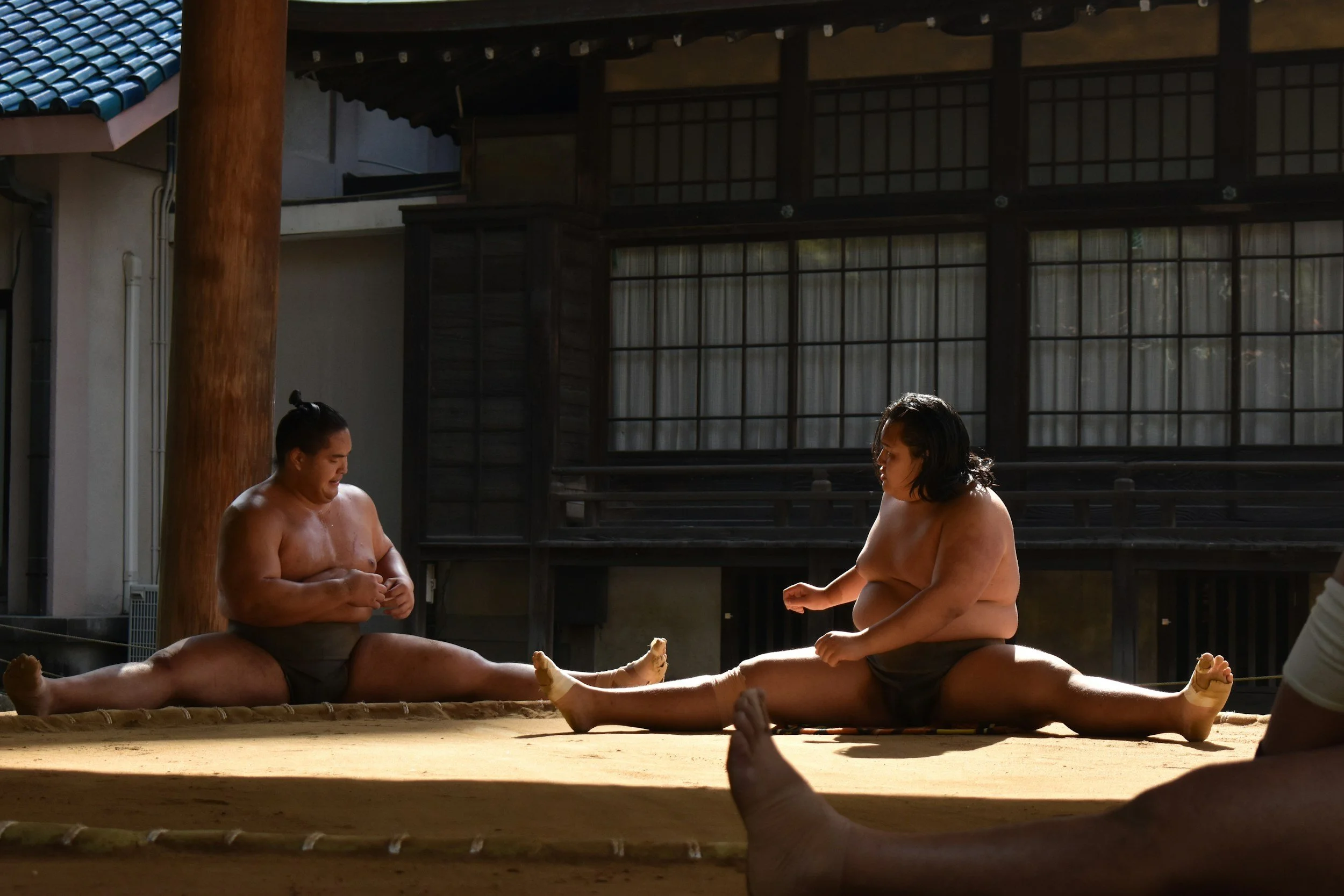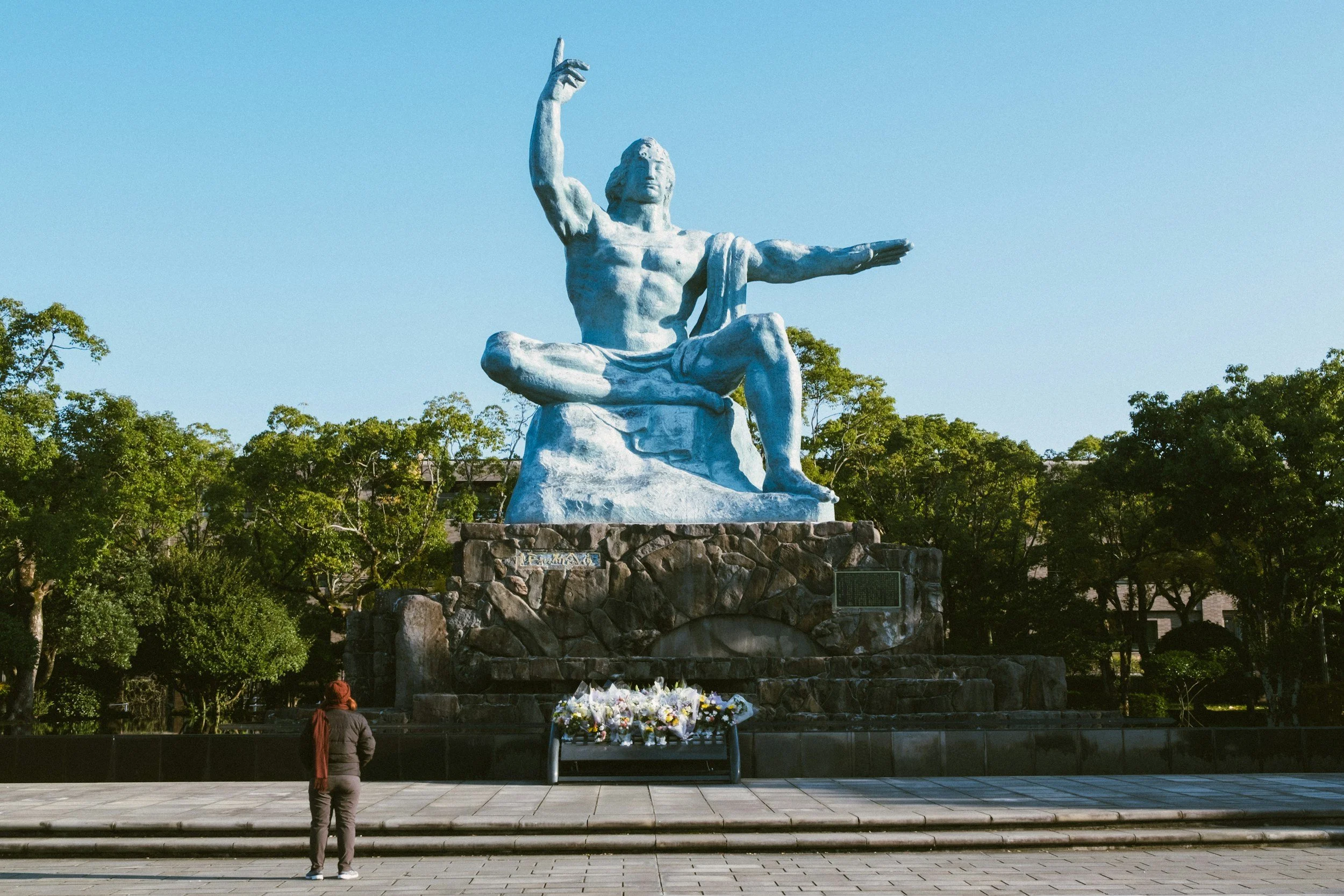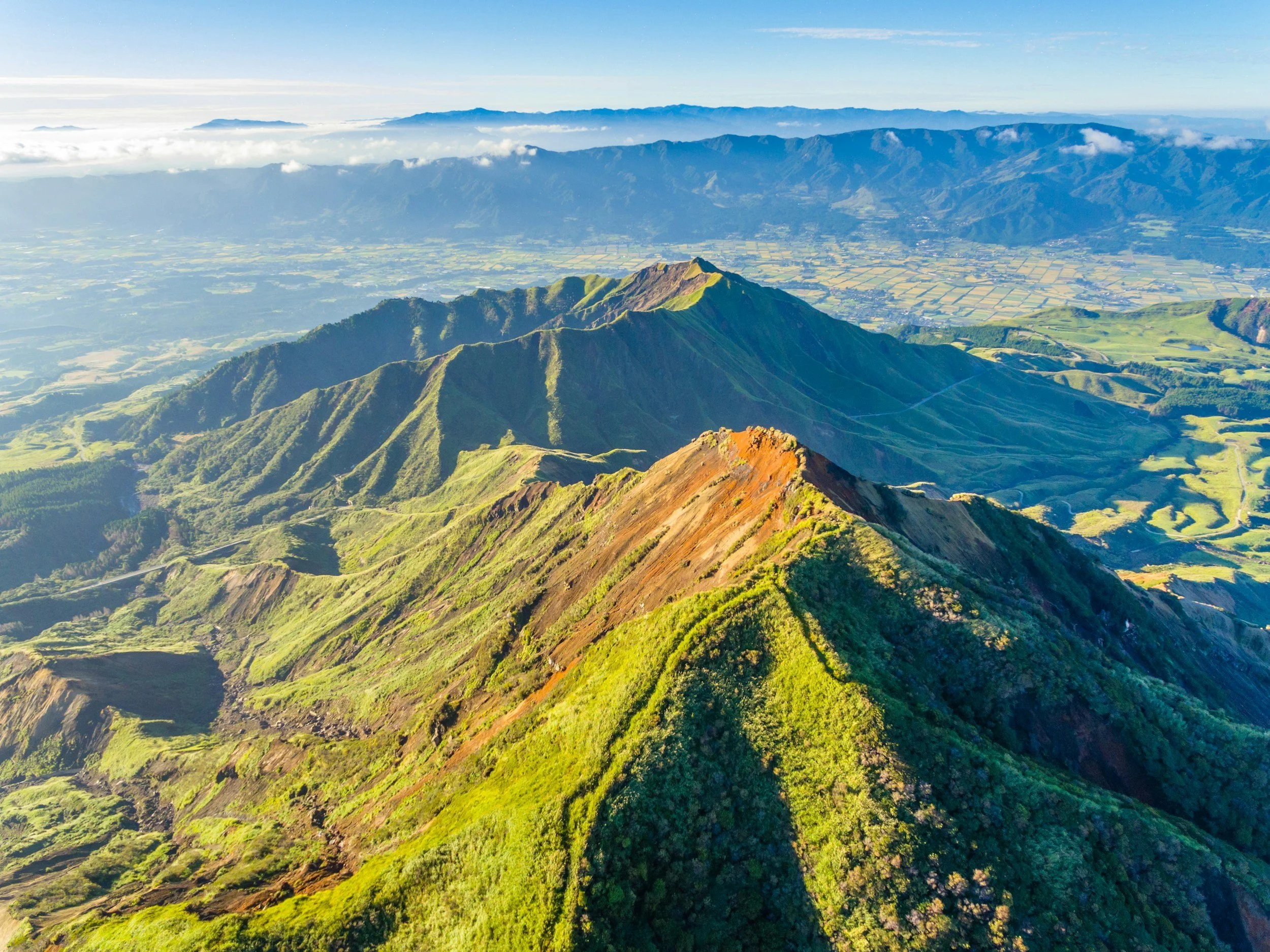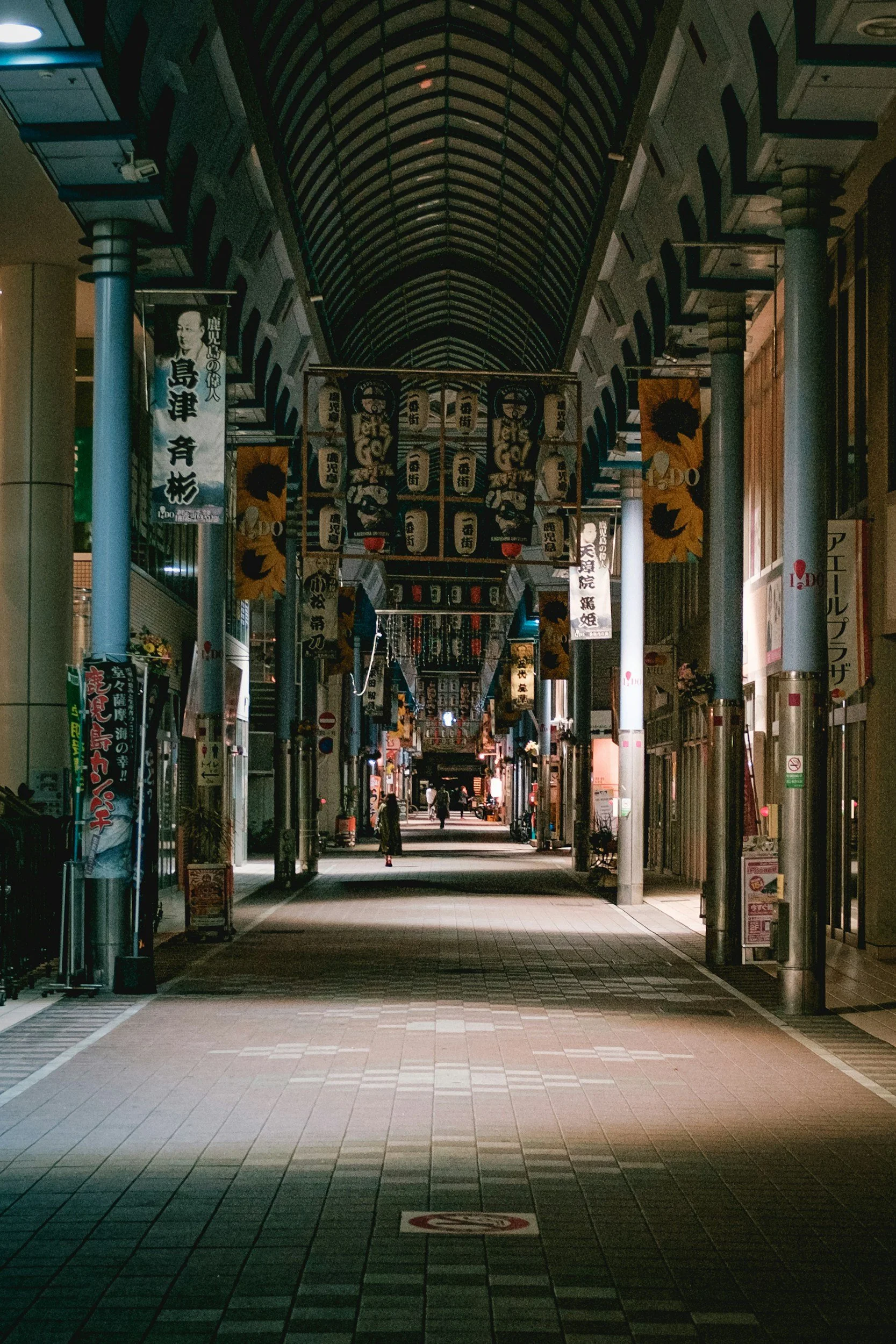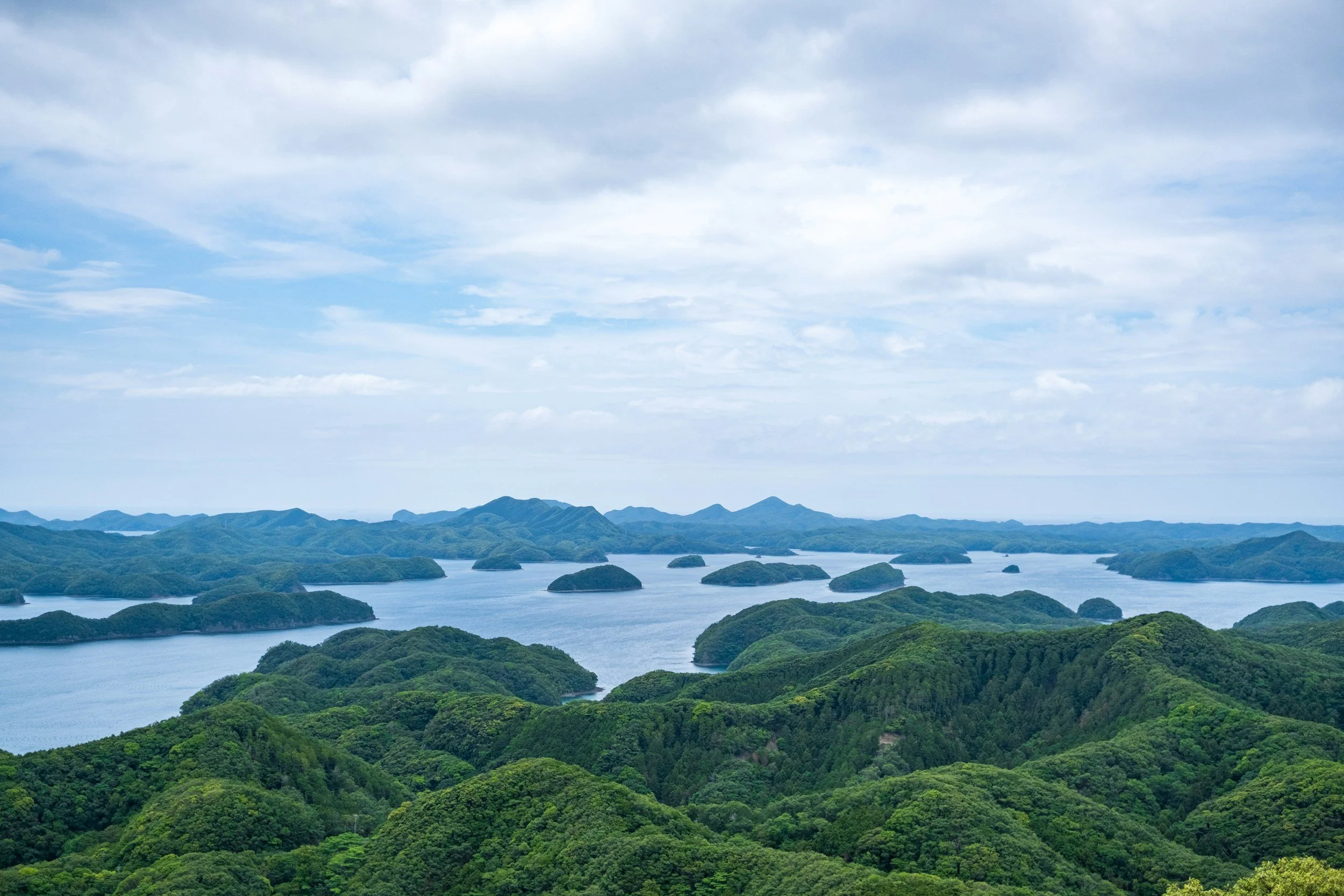
Filming in Kyūshū
Kyushu, the southernmost of Japan’s main islands, blends volcanic drama, hot springs, and cultural crossroads. Kagoshima’s Sakurajima volcano looms over its bay with a constant plume of smoke, while Kumamoto Castle stands as a symbol of resilience after recent earthquakes. Fukuoka’s Canal City showcases bold urban design, Beppu and Yufuin’s steaming hot-spring resorts provide atmospheric backdrops, and Nagasaki’s hillside neighborhoods reflect centuries of Portuguese and Dutch influence. Saga’s terraced tea fields and Karatsu’s coastal castles add further layers of historical and scenic richness.
Kyushu’s diverse settings support a wide range of genres: volcanic terrain lends itself to disaster or survival narratives, Kumamoto Castle anchors historical epics and samurai dramas, and Fukuoka’s yatai food stalls provide authentic backdrops for contemporary stories and culinary shows. Beppu’s steaming fumaroles set the mood for ghost tales and atmospheric documentaries, while Nagasaki’s mix of Western churches and Shinto shrines embodies cross-cultural storytelling. With its subtropical climate and abundance of festivals, Kyushu offers filmmakers vivid opportunities for colorful and dynamic cinematography.
BARAMON supports Kyushu productions by conducting hazard assessments for volcanic shoots, coordinating travel across the island’s rail and ferry networks, and securing permits from multiple prefectures. We work with local cultural organizations to ensure sensitive portrayals of Catholic churches alongside Shinto shrines, and provide translation services in dialect-rich communities to facilitate clear communication.

